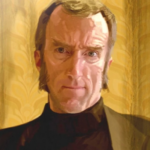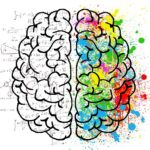How did Breaking Bad achieve its iconic visual style?
Breaking Bad is often praised for its distinctive visual style and cinematography. What techniques, cameras, and lighting were used to create this look?
"Breaking Bad," the critically acclaimed television series created by Vince Gilligan, is noted for its distinctive visual style, which contributed greatly to its storytelling and the psychological development of its characters. Achieving this iconic look was a result of numerous factors, involving a fusion of cinematography, color palette choices, meticulous location scouting, and innovative filming techniques.
Here are several key elements that contributed to the visual style of "Breaking Bad":
1. Cinematography: The show's cinematography was led by Michael Slovis, who became the director of photography starting with the second season. His approach played a pivotal role in establishing the show's visual signature. One of the standout features was the use of wide-angle lenses, which captured the vast, desolate landscapes of Albuquerque, New Mexico, juxtaposed against the suffocating, claustrophobic interiors indicative of the characters' internal turmoil.
2. Camera Technology: During its run from 2008 to 2013, "Breaking Bad" used 35mm film cameras to achieve a rich, textured look that distinguished it from many other shows of the time that were transitioning to digital. Film provided a certain grain and depth that complimented the narrative's intensity. Starting with the fourth season, they switched to the ARRI ALEXA, a high-end digital cinema camera that still delivered a film-like image quality but offered more flexibility in low-light conditions and had a more efficient workflow.
3. Lighting: The lighting on "Breaking Bad" often employed strong, contrasting schemes that highlighted the duality of its characters, reflecting the underlying moral ambiguities and personal conflicts. This chiaroscuro technique underscored the tension and drama of many scenes.
4. Color Palettes: The series used color deliberately to symbolize various thematic elements and character developments. Color was an integral storytelling tool, with different hues representing different characters and their journeys, notably the notable color shifts in clothing and environments as characters evolved or regressed.
5. Camera Angles and Movement: Unique camera angles were a trademark of the show—ground-level shots, often referred to as "Breaking Bad shots," became a visual signature. The show also made creative use of time-lapse photography and montage sequences, contributing to the distinct temporal rhythm and intensifying the suspenseful atmosphere.
6. Location and Set Design: Albuquerque became a character in its own right, with the unique Southwestern American landscape providing a distinctive backdrop. Location scouting was meticulous, and the production design and set decoration paid close attention to detail, extensively using existing locations and sometimes building sets that perfectly mimicked local establishments.
7. Visual Effects: While not as heavily reliant on visual effects as other shows, "Breaking Bad" did use them to enhance the storytelling. One notable aspect was the use of VFX to show the meth cooking process inside glass equipment without actually cooking meth, which required significant technical skill.
The show's visual style was methodical and purpose-driven, with each artistic choice crafted to enhance the storyline and the psychological depth of the characters. It became an exemplar of how visually compelling and intentional cinematography could elevate the narrative impact of a television series. The enduring legacy of "Breaking Bad's" visual style continues to influence filmmakers and cinematographers in how they approach visual storytelling in the medium.


